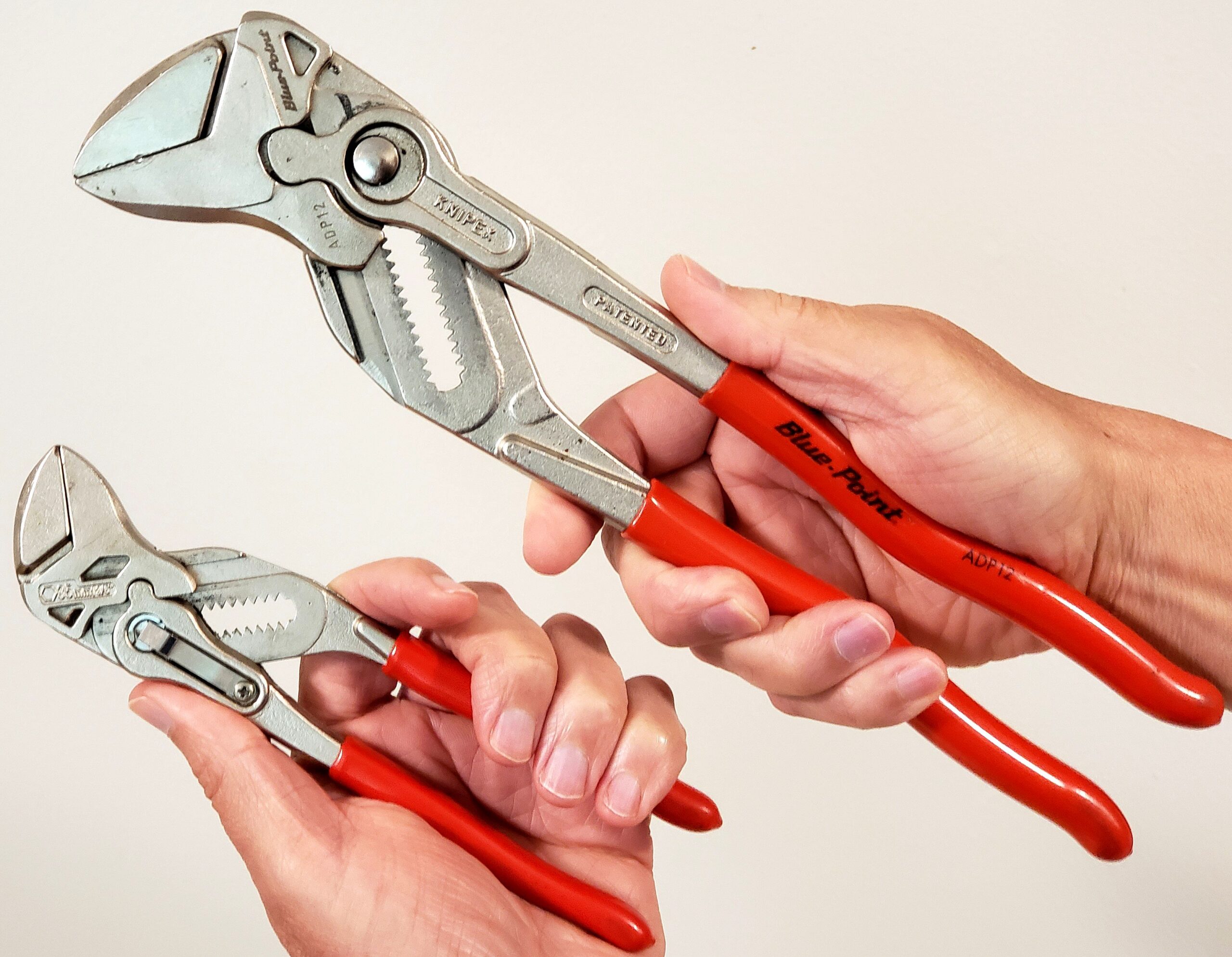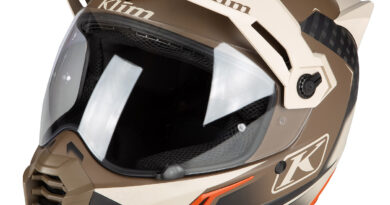Squeeze, don’t tear: the Knipex Pliers Wrench
German toolmaker Knipex (pronounced ka-ni-pex) claims to produce the finest pliers in the world; indeed, they’ve devoted themselves almost exclusively to this one category of hand tools. While I haven’t sampled all pliers available on the planet, I can enthusiastically attest to the superlative quality of the Knipex pliers I own: the awkwardly named (translated?) “pliers wrench” model. “Wrench pliers” rolls off the English-speaking tongue better, and I’ll refer to them as such here. These are among my favorite tools of all time, and reside within a tiny, elite subset of my collection that ends up doing the lion’s share of mechanical tasks. It’s not only in human organizations that 10% of the members do 90% of the work—the same is true among tools, at least if the collection includes several as extraordinarily useful as these.
I first learned of the wrench pliers many years ago during a visit to G.M.D. Computrack in Atlanta, where I was having suspension and chassis work done on two of my bikes. Pro mechanic Todd Dunn turned me on to what he considered one of the most versatile tools ever created, Snap-on’s wrench pliers. When I first noticed he was using a pair of pliers to disassemble my forks, I was shocked. I usually associate pliers with laziness or lack of the proper wrench, not to mention grotesquely scarred surfaces where the pliers’ teeth scratch, gouge or round off every surface they pinch. Yet I had pegged Todd as a consummate perfectionist, neither lazy nor careless, as I’d watched him go to great lengths to avoid microscopic damage or contamination. He certainly had at his disposal any wrench he might want—a mind-boggling assortment was neatly arranged behind him. What the…?

Upon closer examination, the genius of Todd’s tool choice became apparent. Forget everything you know about pliers, except their ease of use. First, the jaws of the wrench pliers have no teeth; they’re uniformly smooth and flat like the inner surface of an open-end wrench. Second, a wickedly clever cam mechanism in the hinge links the upper handle with the lower jaw, which slides vertically within a groove perpendicular to the jaw’s working surface. This setup keeps both jaws perfectly parallel to each other throughout the entire range of motion. Smooth, parallel jaws pose no more threat to the surfaces they contact than would any open-end wrench. In fact, the pressure applied while using the wrench pliers takes up any slack that might exist between the actual size of a fastener and the actual size of a wrench (resulting from variations in manufacturing tolerances). Said slack can concentrate force near a fastener’s corners. The wrench pliers always deliver even pressure across their entire working surfaces.
With the push of a spring-loaded button, the wrench pliers’ adjustable pivot can be easily relocated in fine increments across an extremely wide range, allowing this single tool to take the place of numerous open-end wrenches. Rather than determining the fastener size and digging out the right wrench, just get the pivot in the ballpark and squeeze. This is much faster and simpler than fussing with the worm gear on an adjustable crescent wrench (which can promptly wiggle out of adjustment) and allows quicker, more precise adjustment than Channellocks. The wrench pliers’ generous handle length allows prodigious leverage, both in terms of grip (10:1) and torque, making them great for clamping and bending, too.
Sounds fantastic, but Todd was using a Snap-on tool, not Knipex. Yes, his were branded as Snap-on, the widely recognized premium tool supplier. When I bought mine, they were branded as Blue Point, a line within Snap-on’s range. However, the wrench pliers currently don’t appear to be available branded as either. I located them online as Knipex tools, then realized they had been so all along, and had merely been white-labeled by Snap-on (see “Knipex” in the forged, oil-hardened, chrome vanadium steel, with “Blue Point” stamped on the coated handle). Today, you should search for these using the less familiar Knipex name.
As you’d expect with anything ever associated with Snap-on, the wrench pliers are constructed with impeccable precision and materials of the highest quality. The metalwork is artfully done, and the handles are shaped perfectly for a natural-feeling, comfortable and secure interface with human hands. All movements are silky smooth and absolutely stable. These tools are truly a joy to use—which is good, since they’re not such a joy to buy. The largest size carries a list price around $100, so the cost of ownership is daunting. Before, I’d have thought dropping a C-note on a pair of pliers was crazy. Now—having used the wrench pliers extensively for roughly two decades—I consider such a purchase not only sane, but a real bargain.
You’ll still want that old draw full of wrenches for certain peculiar situations, like extra-tight spaces lacking clearance for the wrench pliers’ jaws, which aren’t quite as narrow as specialty spanners. However, if you can handle the pricing, I’m confident the wrench pliers will be among the most used tools in your garage. If you don’t already have a drawer full of wrenches, purchasing a couple pairs of wrench pliers could conceivably save you from ever needing to accumulate such, and they make a terrific addition to your traveling tool kit.
The wrench pliers come in five sizes, ranging from 125 mm (~5”) to 300 mm (~12”) in length, and can be found individually or in sets online and at hardware stores, including Lowes and Home Depot. I’ve done very well with just the 180 mm (~7”) and 300 mm models, which have maximum jaw capacities of 60 mm and 36 mm, respectively. Several different grip styles are available to accommodate ergonomic preferences and provide insulation against electrical shock, if desired. Prices vary significantly among vendors but are usually discounted significantly from MSRP; it pays to shop around. Knipex tools come with a lifetime limited warranty.
What is YOUR favorite tool? Whether it’s a run-of-the-mill screwdriver you’ve had for 20 years or a brand-new, high-tech invention, let us know about it! Send a photo and an explanation of why it’s your go-to tool (in as much detail as you care to get into) to [email protected].



